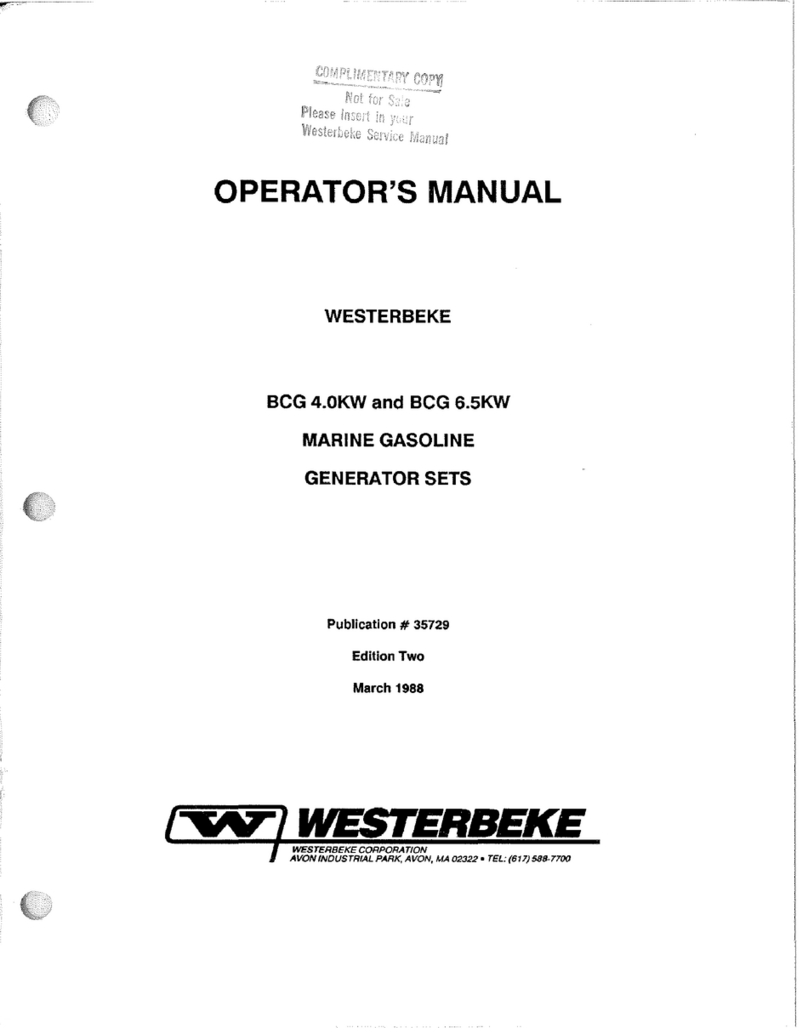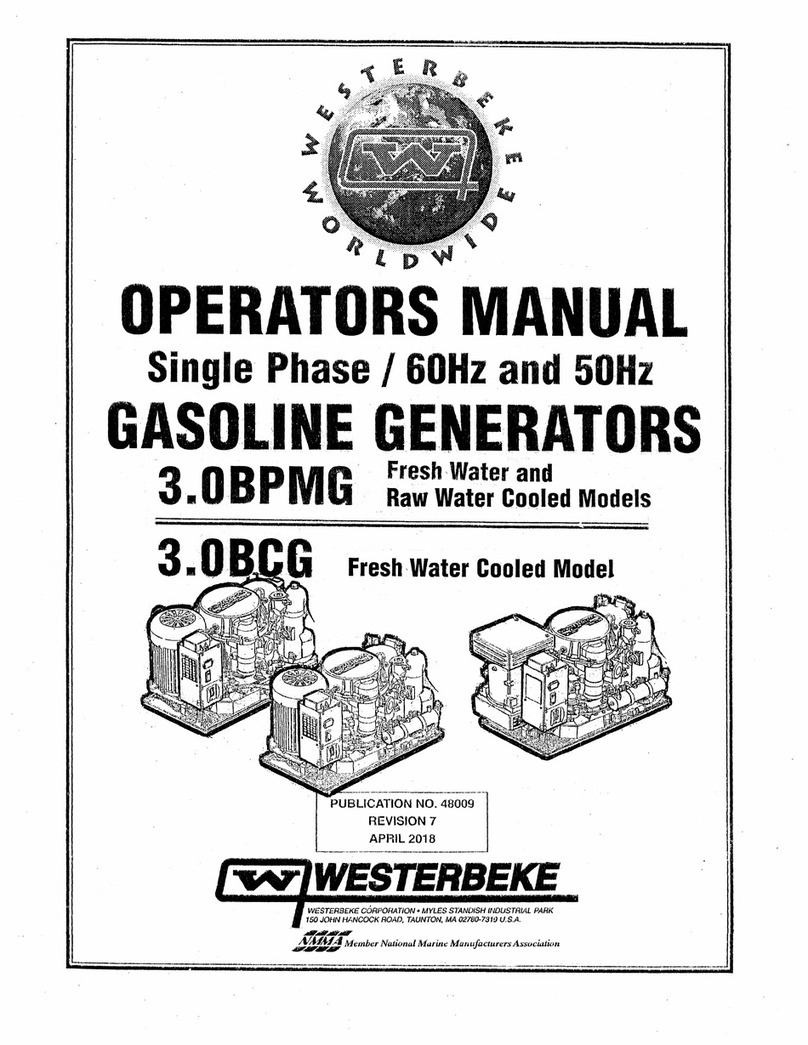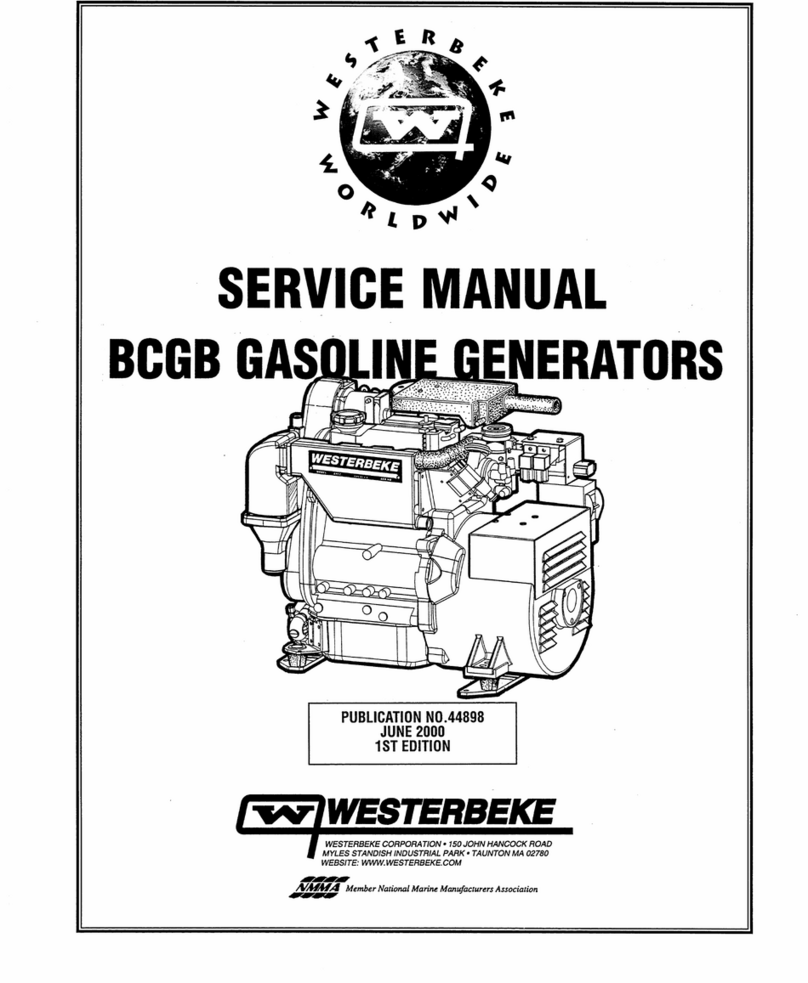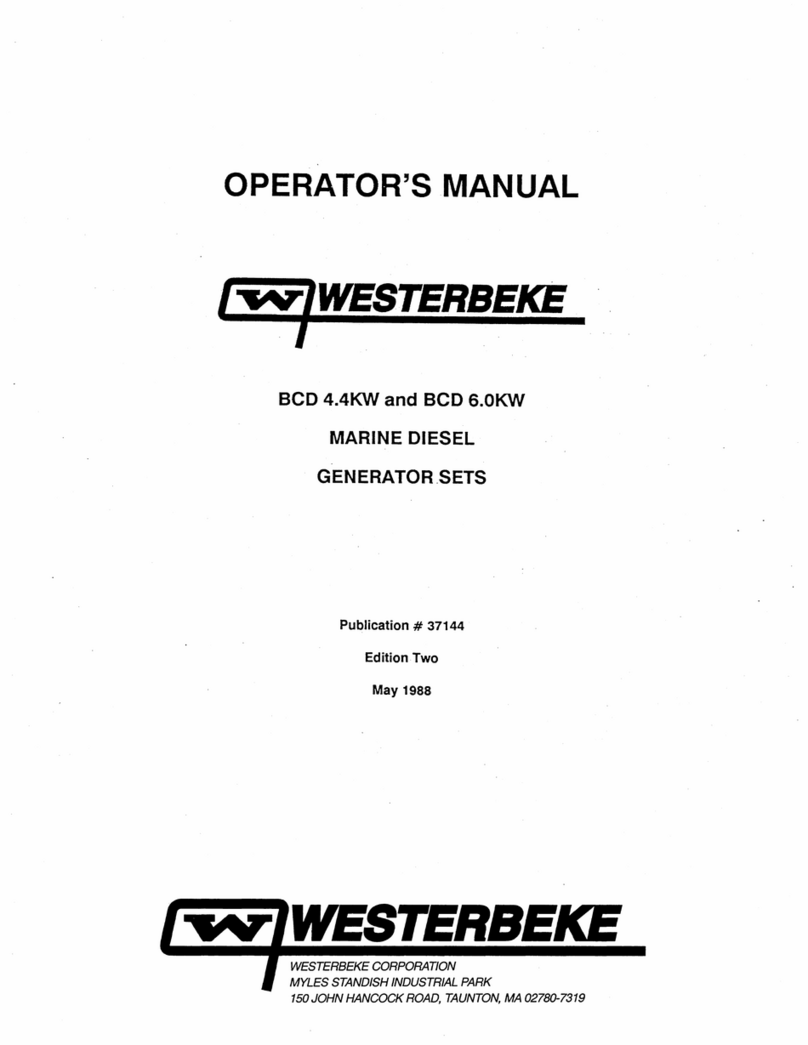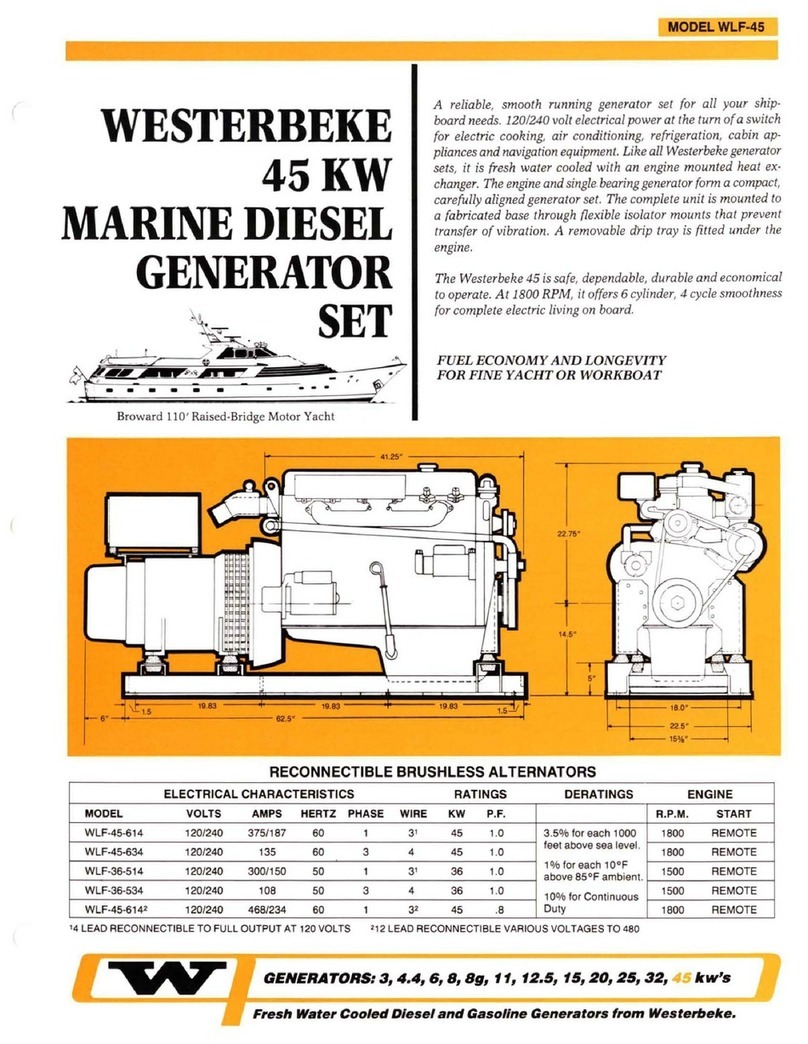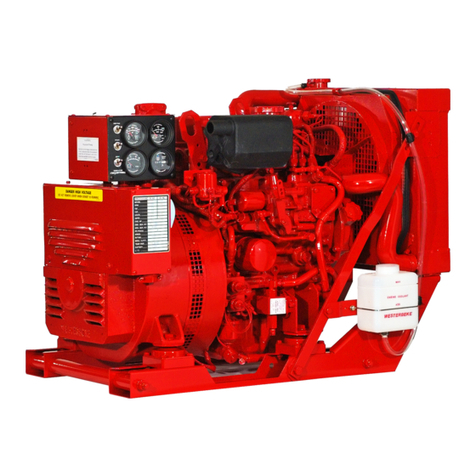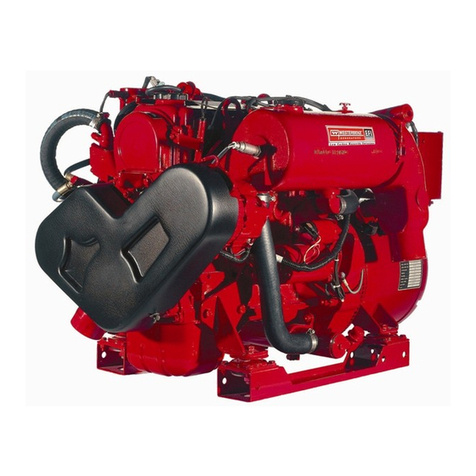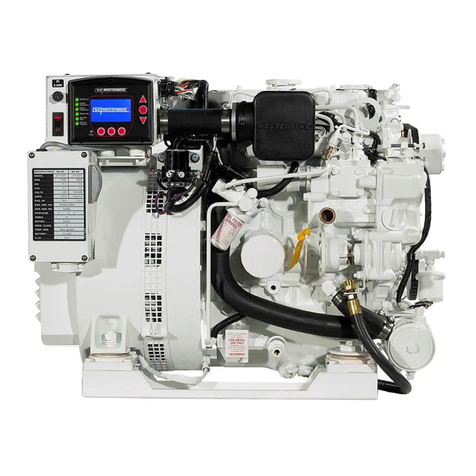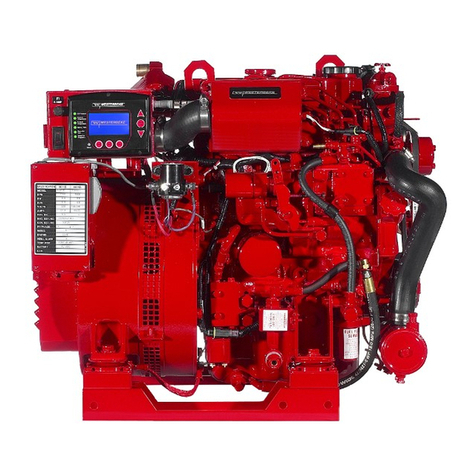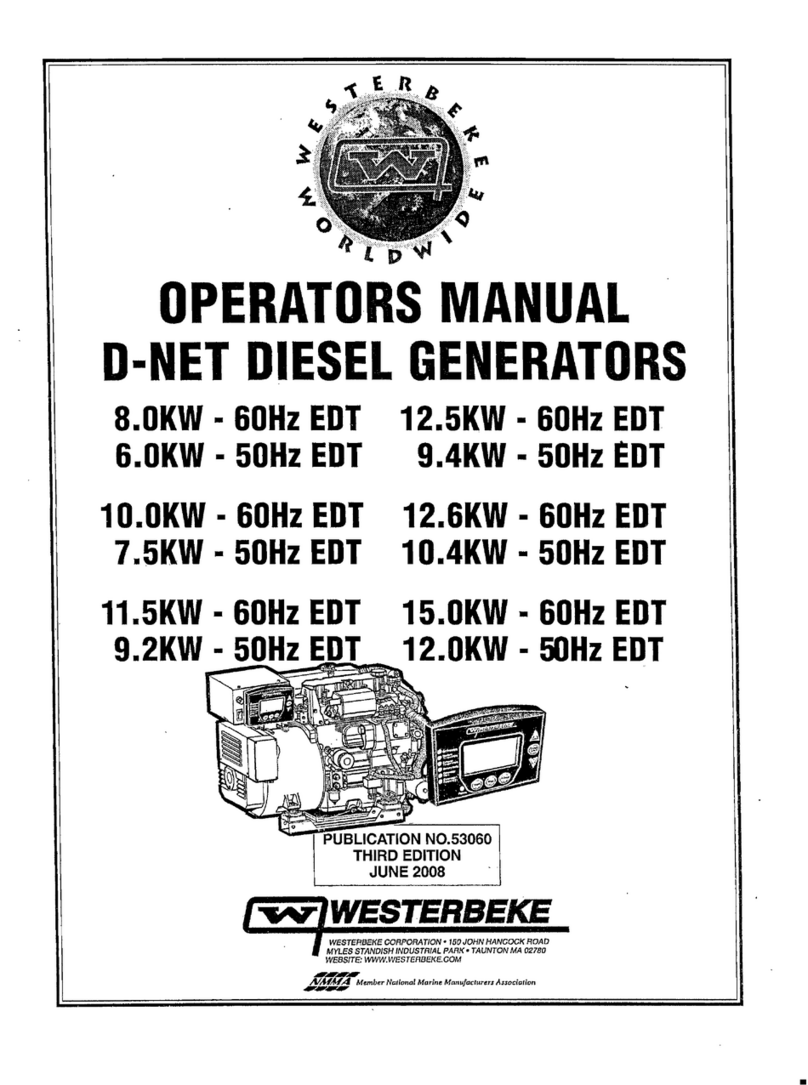
TABLE
OF
CONTENTS
Parts
Identification
...................................................
2
Introduction
................................................................
3
Fuel,
Engine
Oil
and
Engine
Coolant
.........................
5
Preparations
for
Initial
Start
......................................
6
Oigital
Control
Panel
..................................................
7
Remote
Stop/Start
Panel
.........................................
8A
Generator
Break·ln
Procedure
...................................
9
Daily
Routine
..............................................................
9
Maintenance
Schedule
(Chart)
................................
10
Fuel
System
.............................................................
.
12
Cooling
System
........................................................
.
13
Raw Water Intake Strainer.................................
15
Draining the Raw water System ........................
13
Fresh Water Cooling Circuit ..............................14
Changing the Coolant.........................................14
Thermostat..........................................................
15
Raw Water Cooling Circuit................................16
Heat Exchanger..................................................16
Raw Water Pump ...............................................16
Engine
Lubricating
011
..............................................
17
Engine Oil Change.............................................
17
Remote Oil Filter
(Optional)
..............................
.18
Starter
Motor
(Troubleshooting)
...............................
19
Wiring
Diagram
#52413
..............
..............................
21
Engine
Troubleshooting
(Chart)
................................
22
Alternator
Testing
.....................................................
24
Battery Care .......................................................24
Glow
Plugs
................................................................
27
Wiring
Diagrams
.......................................................
20
Engine
Troubleshooting
(Chart)
................................
22
Alternator
Testing
.....................................................
24
Battery Care .......................................................26
Glow
Plugs
................................................................
27
Engine
Adjustments
..................................................
28
Oil Pressure ........................................................28
Engine Compression ..........................................28
Valve Adjustment ...............................................28
Drive Belt Adjustment .......................................29
Fuel Injectors......................................................29
Magnetic
Plck·Up
..........................................................
.30
Generator
Specifications
..............................................
31
Generator
Information
..................................................
.33
Twelve
Lead
Wiring
Connections
................................
34
Generator
Voltage
Adjustment
...................................
.35
Electronic
Regulation
...................................................
.36
Internal
Wiring
Diagram
................................................
37
Exciter
Rotor/Rotating
Field
........................................
.38
Shore
Power
Transfer
Switch
...................................
39
Lay·Up
and
Recommissioning
.................................
.40
Metric
Conversion
Data
(Chart)
..............................
.42
Suggested
Spares
....................................................
.4
3
Water
Heater
Connections
(Optional)
.....................
.44
Engines &
Generators
1

